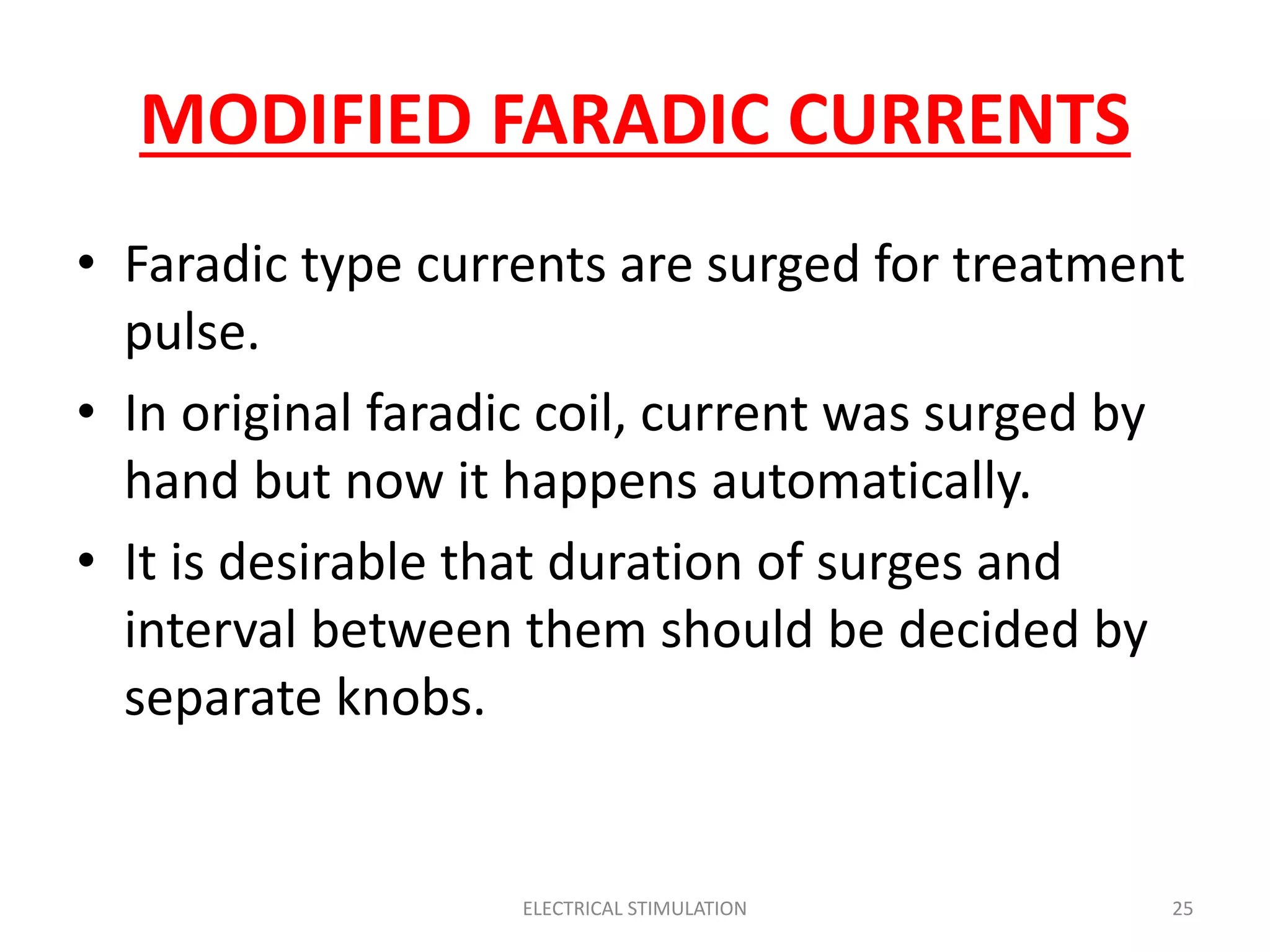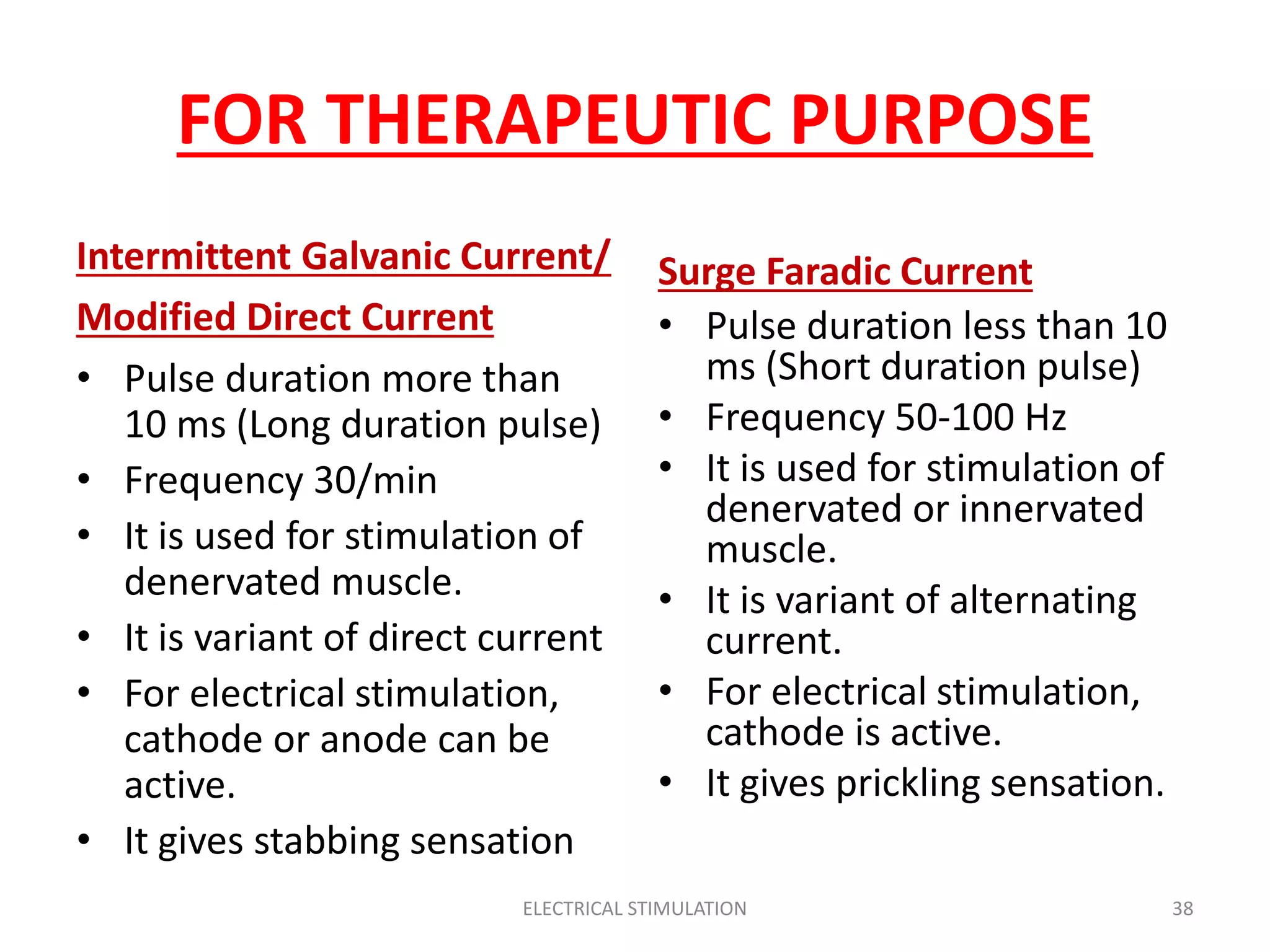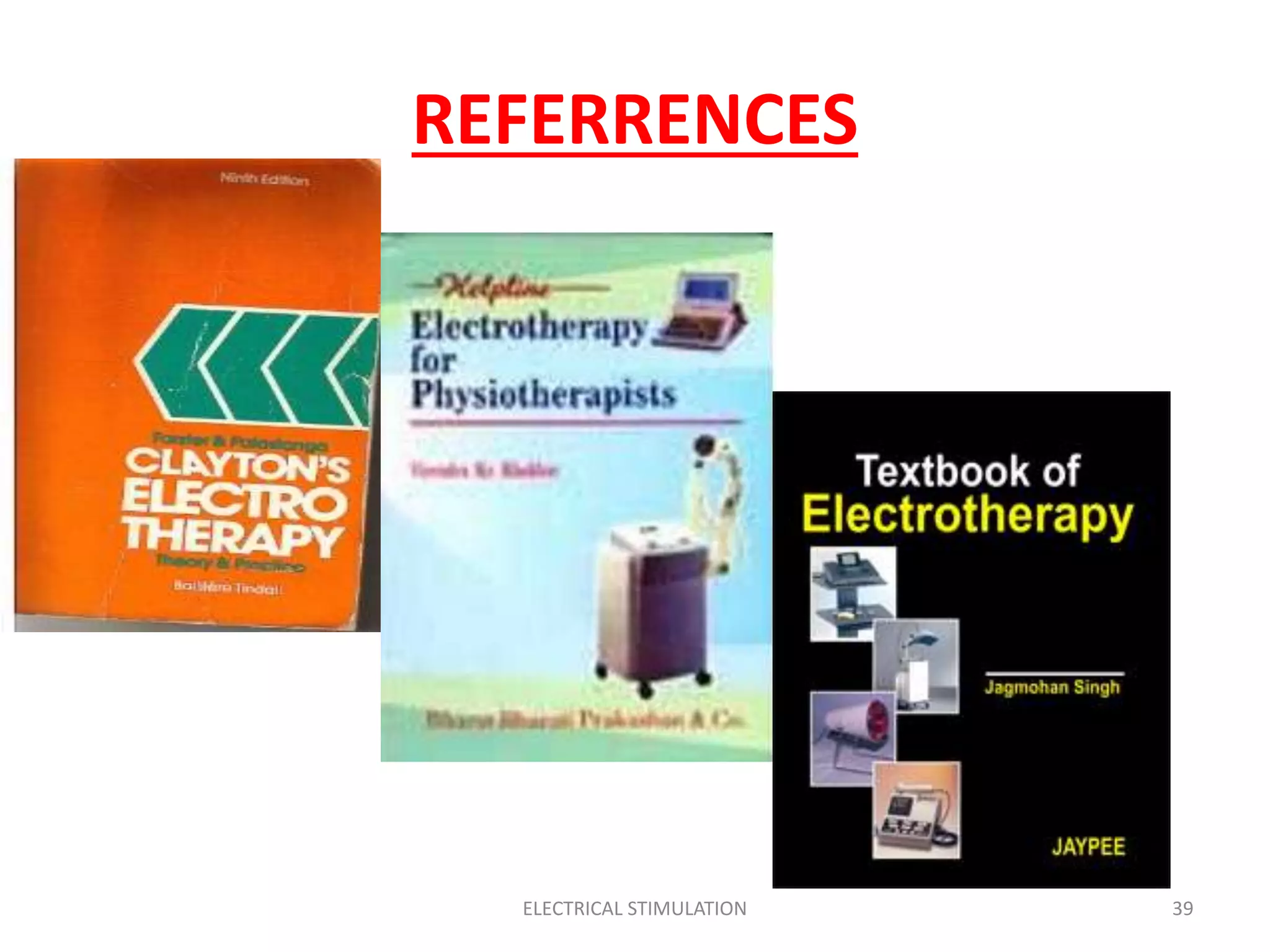This document provides a comprehensive overview of electrical stimulation techniques in physiotherapy, including types of currents, electrode classifications, and parameters affecting treatment. It discusses the physiological effects of stimulation, indications for use, and contraindications. Additionally, it outlines the methods and considerations for effective application in clinical settings.









































